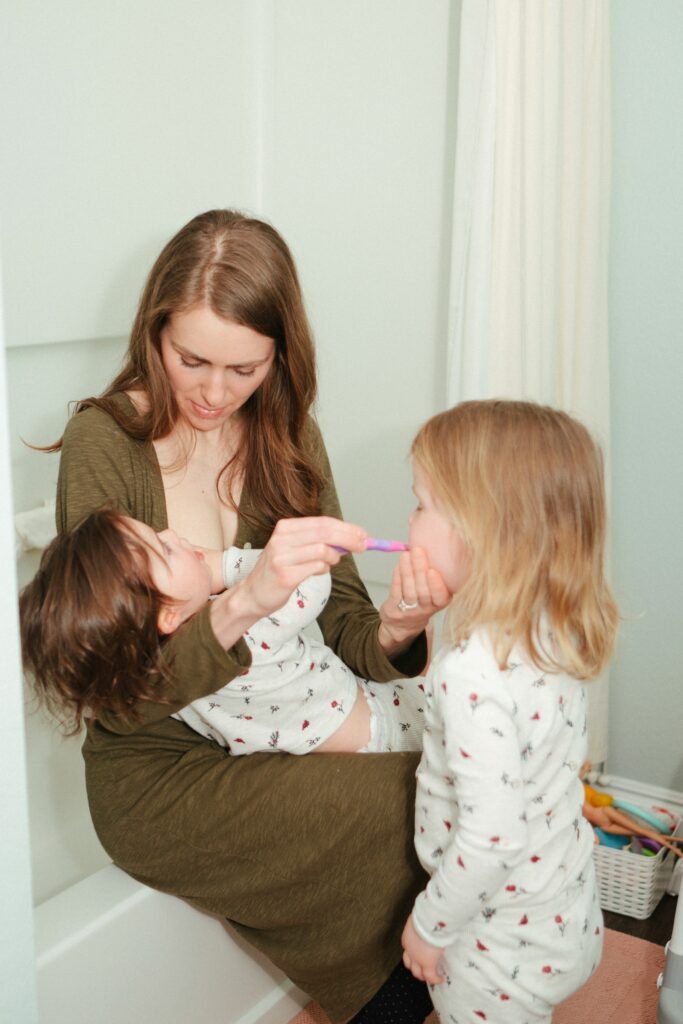My Real-Life Self-Care Routine as a Busy Woman
Why Self-Care Feels So Essential
There’s something almost sacred about carving out little pieces of time for yourself when everything else is pulling at you—work emails, family needs, endless notifications. For the longest time, I thought self-care was supposed to be all bubble baths and expensive spa days, but real life quickly showed me otherwise. For me, self-care isn’t a luxury—it’s how I keep myself from burning out completely.
My version of self-care doesn’t look like those perfect Instagram routines with 5 a.m. yoga, green juices, and journaling under a golden sunrise. Honestly? Some days, my self-care happens in five stolen minutes hiding in the bathroom with a cup of tea, just to breathe. And I’ve learned that’s okay.
What I’ve realized over the years is that true self-care isn’t about looking “perfectly balanced.” It’s about protecting your energy, protecting your boundaries, and staying connected to yourself when life feels like it’s trying to stretch you too thin.
And here’s the best part: self-care doesn’t have to look the same every day. Some days, it’s sweating through a workout and feeling strong. Other days, it’s ordering pizza because I can’t face the kitchen. Both are valid. Both are self-care.
So, I’m sharing my messy, real routine—not as a “how-to” but more like giving you permission. Permission to figure out what actually works for you and to let go of all the “shoulds” wellness culture tries to pile on. Because at the end of the day, self-care isn’t selfish—it’s survival.

What My Self-Care Routine Actually Looks Like
My routine is far from perfect, but it’s mine—and it works. Some days it’s 6 a.m., other days it’s 11 p.m., but I’ve stopped stressing about the timing. What matters is that I show up for myself in some small way.
I used to be very all-or-nothing about self-care, which left me constantly feeling like I was failing. Now, I’ve built it in layers—sometimes it’s as small as a quick stretch or putting on my favorite lip balm. Other times, I can fit in a longer walk, a proper skincare session, or half an hour with a book.
The big shift was honesty. I stopped forcing practices that didn’t feel right—like meditating when my brain just wouldn’t calm down or journaling when I’d rather just read. By focusing on what actually fills my cup instead of what’s “supposed to,” self-care stopped feeling like another box to tick.
How It Changed Things at Home
One of the first signs my routine was making a difference came from my husband—noticing my laugh. One evening, he said, “I haven’t heard you laugh like that in ages.” That hit me. I realized that by taking care of myself, I wasn’t just changing my mood—I was shifting the energy in our whole house.
Before, I was always running on empty—snappy, resentful, never fully present. My kids got a tired version of me, my partner got the leftovers, and I told myself that was just the cost of being “a good mom and wife.” But it wasn’t working for anyone.
Now, I protect at least 20 minutes in the morning just for me—a cup of tea and a book before the chaos starts. My kids know that “the comfy chair” is my quiet spot, and my husband gently shields that time for me. Funny enough, it’s taught my kids about boundaries, too—that taking care of yourself isn’t selfish, it’s necessary.
Why This Works for M
What makes my routine stick is that it’s realistic. I don’t try to cram in complicated rituals that don’t fit my life. Instead, I focus on the basics: sleep (even if it means leaving dishes for tomorrow), movement I actually enjoy, eating mostly nourishing foods (with treats too), and cutting down on the doom scrolling.
The magic is in consistency, not perfection. I don’t aim to nail every detail daily. Instead, I look at the bigger picture—how I’ve cared for myself over the week or month. That shift from perfection to persistence has made all the difference.
How You Can Build Yours
Here’s what’s helped me:
- Listen first. What do you actually need—rest, connection, movement, quiet? Start there.
- Be realistic with time. Don’t chase a one-hour ritual if all you have is ten minutes.
- Create a menu of options. I keep quick (5 min), medium (15 min), and longer (30+ min) practices ready to grab depending on the day.
- Let go of guilt. Self-care isn’t selfish—it’s what makes you better at everything else.
- Find what feels restorative. Swap meditation for a walk, swap journaling for voice notes. Do what works for you.
And remember, self-care can happen at night too. My evening skincare ritual is just as grounding as my morning tea—it’s my way of saying, “Okay, today’s done.”
The Bottom Line
Self-care doesn’t have to look picture-perfect. It doesn’t need to be expensive, time-consuming, or aesthetic enough for social media. It just has to work for you.
For me, that means stolen quiet moments, flexible rituals, and the freedom to change things up depending on the season of life I’m in. And that’s what makes it sustainable.
So if you take one thing from my routine, let it be this: the “best” self-care routine is the one you’ll actually do—the one that makes you feel more like you.

Frequently Asked Questions For Real-Life Self-Care
1. How do I find time for self-care when my schedule is already packed?
Look for small pockets of time throughout your day instead of trying to create large blocks. Even 5-minute intervals can be meaningful when used intentionally. Consider waking up 15 minutes earlier or repurposing time spent on social media.
2. Is self-care selfish when others depend on me?
Quite the opposite. Self-care ensures you have the emotional and physical resources to show up fully for those who depend on you. It’s like securing your own oxygen mask before helping others—a necessity, not a luxury.
3. What counts as “real” self-care?
Any intentional activity that replenishes rather than depletes your physical, emotional, mental, or spiritual resources. This varies widely between individuals—what energizes one person might exhaust another.
4. How can I afford self-care on a tight budget?
The most effective self-care practices often cost nothing: boundary setting, adequate sleep, mindful breathing, nature walks, or library books. Focus on accessibility rather than Instagram-worthy experiences.
5. How do I handle guilt when taking time for myself?
Reframe self-care as responsible stewardship of your most valuable resource—yourself. Track the positive impacts of your self-care practices on your relationships and productivity to reinforce its value.
6. What if my family or partner doesn’t respect my self-care time?
Clear communication is essential. Explain specifically how your self-care benefits the entire household and set explicit boundaries. Start small and be consistent to demonstrate your commitment.
7. How do I know if my self-care routine is actually working?
Effective self-care produces noticeable improvements in your resilience, patience, energy levels, and overall mood. Track these indicators rather than focusing solely on consistency of practice.
8. Can scrolling social media count as self-care?
While it might provide temporary distraction, most people report feeling worse after extended social media use. Test this by noticing your energy and mood before and after various activities to identify what truly replenishes you.
9. What’s the minimum effective dose of self-care?
This varies by individual and circumstance, but most people benefit from at least 20-30 minutes of intentional self-care daily, even if divided into smaller segments throughout the day.
10. How do I create a self-care emergency kit for particularly difficult days?
Identify 3-5 quick, accessible practices that reliably improve your state of mind. Write them down and keep this list handy for moments when you’re too overwhelmed to think clearly.
11. Should I schedule self-care or practice it spontaneously?
A combination works best. Schedule non-negotiable self-care basics while remaining flexible enough to respond to your changing needs throughout the day.
12. How do I prevent self-care from becoming another obligation?
Focus on how activities make you feel rather than checking boxes. Regularly reassess your practices to ensure they remain genuinely replenishing rather than obligatory.

